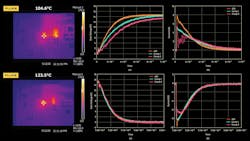Peak Current of Isolated Gate Drivers (.PDF Download)
One question often comes up when considering what gate driver to use for an application: What is the peak current that a driver can deliver? Peak current is one of the most important parameters in gate-driver datasheets. It’s generally taken as the be-all and end-all for the drive strength of the gate driver. The time to turn a MOSFET/IGBT on and off relates to the current that the gate driver can deliver, but it doesn’t tell the whole story.
The term peak current is so widespread in the industry that it’s included in the title of many gate-driver datasheets. Despite this, its definition varies from part to part. This article discusses the issues with using peak current as a deciding factor when selecting a gate driver for a specific application and compares some of the more common representations of peak current in datasheets. A comparison between gate drivers with similar peak current numbers in their titles is explored, and a discussion on gate-drive strength is made.
